 |
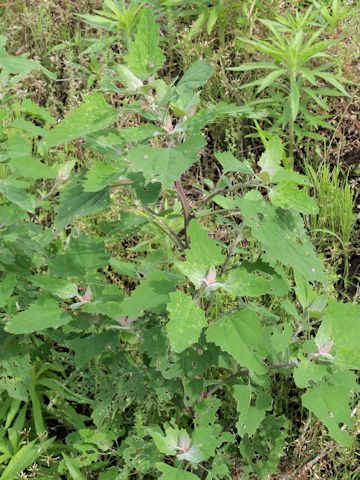

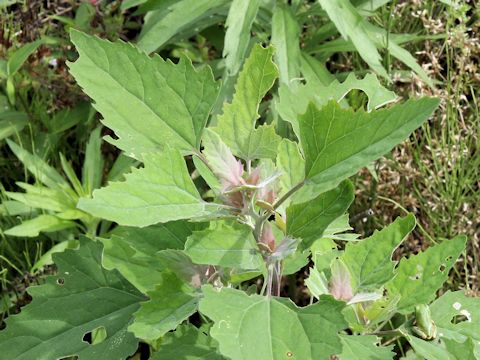

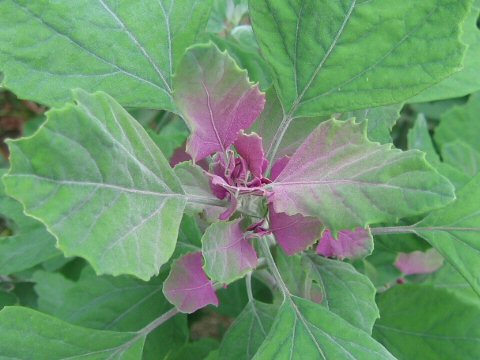

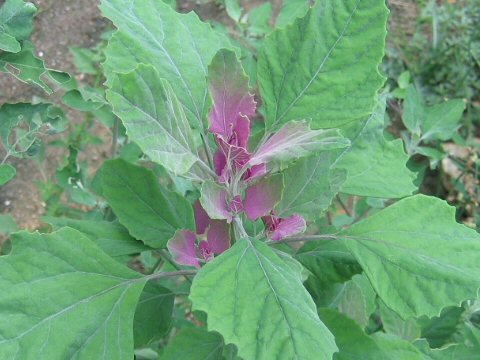

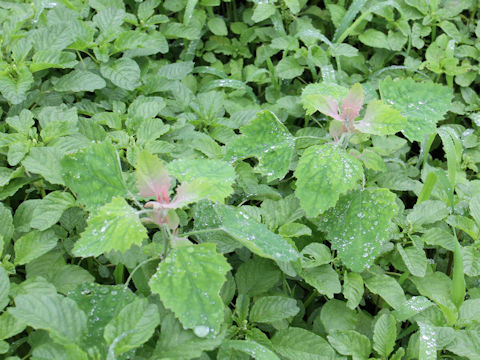

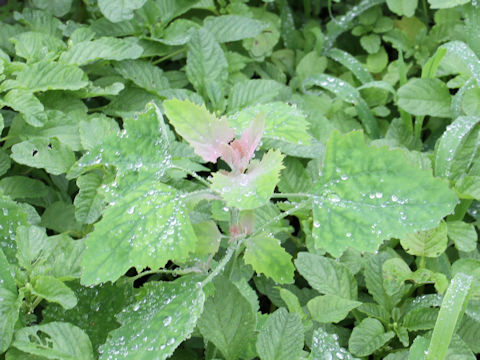

|

|
インドあるいは中国が原産といわれています。わが国へは古い時代に渡来し、食用として栽培されていました。今では各地の畑や荒れ地に帰化しています。「しろざ」の変種で、若葉の表面が紅紫色の粉状毛に被われます。8月から10月ごろ、葉腋から穂状花序をだして黄緑色の花を咲かせます。茎は軽くて丈夫なため「あかざの杖」として利用されてきました。中国語では「杖藜(zhang li)」と呼ばれます。
|

|
アカザ科アカザ属の一年草で、学名は Chenopodium centrorubrum (syn. Chenopodium giganteum)。英名はありません。
|

|
The "Akaza" (Chenopodium centrorubrum) belongs to Chenopodiaceae (the Goosefoot family). It is an annual herb that is said to be probably native to India or China. It was introduced into Japan and cultivated as a food in the ancient days. Nowadays it is naturalized in fields ot waste grounds around the country. It is a varity of Fat hen (Chenopodium album). This herb is covered with magenta powdery hairs on the surfaces of new leaves. The spikes are borne on the axils and the yellowish green flowers bloom from August to October. The dried stems are light and strong, and have been used as sticks. In Chinese, it is called "杖藜" (zhang li).
|

|
[上・中1] 茨城県稲敷市釜井にて、2011年06月20日撮影。
[中2・中3] 大阪府四條畷市清滝中町にて、2004年08月15日撮影。
[中4・下] 宮城県川崎町支倉にて、2020年07月13日撮影。
|







